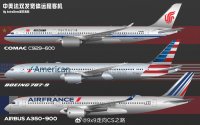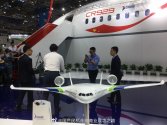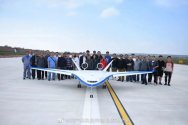September 10th, 2023. Plenary session of #2023PujianginnovationforumThe paragraph is sourced from this article by The Paper, dated 18 February 2022. Likely to have been written by COMAC (or related departments/subsidiaries):
Speaking of the CXF, I found this tender notice for comprehensive integrated verification platform for aircraft (boarding and emergency) cabin doors, published by COMAC in late-December last year.
Posted by @善良的飞天行者 underneath the original post on Weibo.
View attachment 127762
Speaking of the C939, here's an alleged rough specifications for the airliner. Apparently some interested in the C939 appeared in the past couple days.
Posted by @饭Sir看天下 on Weibo and others on Baidu several days ago, the authenticity of the following information cannot be verified:
View attachment 127763
From the comments, it appears that the C939 could be COMAC's counterpart to the Airbus A350 or Boeing 777X, while the CXF might be COMAC's counterpart to the Airbus Beluga XL. Of course, none of these equivalence have been verified and confirmed, so take them with a massive pinch of salt here.
He Dongfeng, secretary of Party committee and Chairman of COMAC..
after 15 years of development, three products. ARJ21/C919/C929 have initially formed. through these three aircrafts a basic product pedigree has been formed. two aircrafts have entered in the market and one is in development. there will be new development models in the future..
that's his statement. last line is really interesting. but interpretation of ''New development models'' could be be vary..
-------------------------------------------------------------------------------
COMAC officially announced C919 shorter and stretched variants. C929 will also have different variants.

this is just the basic CGI to compare C929 with other wide body aircrafts.. look at the actual size of C929-600.. C929 will also have two different models..
COMAC also researching Blended wing body civil aircraft in close collaboration with Chinese universities. COMAC even showcase the model in Zhuhai airshow as well..


in fact, Northwestern Polytechnical University in Xian successfully flown a subscale BWB aircraft model. and NPU-300 model solved the long standing take off and landing problem and significantly improved the performance also solved the emergency evacuation problem..
this NPU-300 model is designed to carry 300 passengers and with the range of 13,000 KM..
fun fact - USA tried to hack this university. NPU is one of the most prestigious Aerospace/aviation institute in whole of Asia. also the leading Chinese aviation university..
-------------------------------------------------------------------------------
its too early to talk about C939.. but COMAC actively exploring next generation civil aviation product.. BWB is high on agenda it seems.
Last edited:
